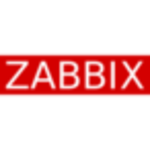What is our primary use case?
We're only using it for collecting the logs and forwarding it, and then in some areas, we use it for scheduling stuff and there are some new alerts that come in, and then from there, they had to trigger some Lambdas.
We build the monitoring and everything on top of the Datadog.
What is most valuable?
I'm a technical manager and they use CloudWatch to forward all the requests to Datadog. I don't know the specific features inside the CloudWatch that they found useful.
Our team finds it overall quite useful.
Everything is based off of CloudWatch. Logs stream through CloudWatch and then everything is piggybacked, the telemetry and everything is coming out of that.
It's pretty simple to set up.
What needs improvement?
I haven't heard any complaints about the product.
It would be nice if they could make it in such a way that we wouldn't have to rely on Datadog as much.
We'd like the interface to be as easy as Datadog.
For how long have I used the solution?
The department has been using the solution for about two and a half to three years. They've used it for a while and I recently joined the team.
What do I think about the stability of the solution?
It's stable. The performance is good. It's reliable. There are no bugs or glitches. It doesn't crash or freeze.
What do I think about the scalability of the solution?
We haven't heard so much about any scalability issues. It scales well. It's about the volume and we pump so many logs, particularly in the space of the Datadog, it becomes expensive. We've put restrictions around it based on price and not based on that it can't be done. We just stick to the logs, indexed in size, so people complain that it costs so much.
When it comes to writing the PI data into the logs, we always ask: should we do it, not do it? It's all to do with your teams. Overall, for us, it has become a widely accepted solution to be used in the public cloud.
We have about five dozen technologists that use the solution currently. We might have between 100 and 500 end-users in different business groups.
How are customer service and support?
We've used support in the past and they are always available to us when we need them. We haven't had issues getting help.
We have their solution architects available for us. We can call them anytime and they come in. They're extremely good with us.
How would you rate customer service and support?
Which solution did I use previously and why did I switch?
We also use Datadog.
People find the dashboarding of Datadog to be very comfortable and very elegant. That's one of the main things that come out. They take the data from the CloudWatch and they tally with the costing aspect as well, however, mainly, people find it useful on the dashboard. They like the alerts et cetera. The usability and search are great.
How was the initial setup?
The initial setup is pretty straightforward and simple. It's easy. It's not overly complex.
The usage in both CloudWatch and Datadog is about the volume. People simply have to be mindful of how much they want and how they want to index and manage them. Otherwise, it's pretty straightforward.
What's my experience with pricing, setup cost, and licensing?
I'm not sure what the exact cost is.
What other advice do I have?
We're an enterprise group. We may have a partnership with Amazon. I'm not sure.
We mainly use the public cloud. We also have hybrid setups.
I'd rate the solution an eight out of ten. It does what it does and it does well. However, the UI could always be better.
Which deployment model are you using for this solution?
Public Cloud
Disclosure: My company has a business relationship with this vendor other than being a customer. Partner






















